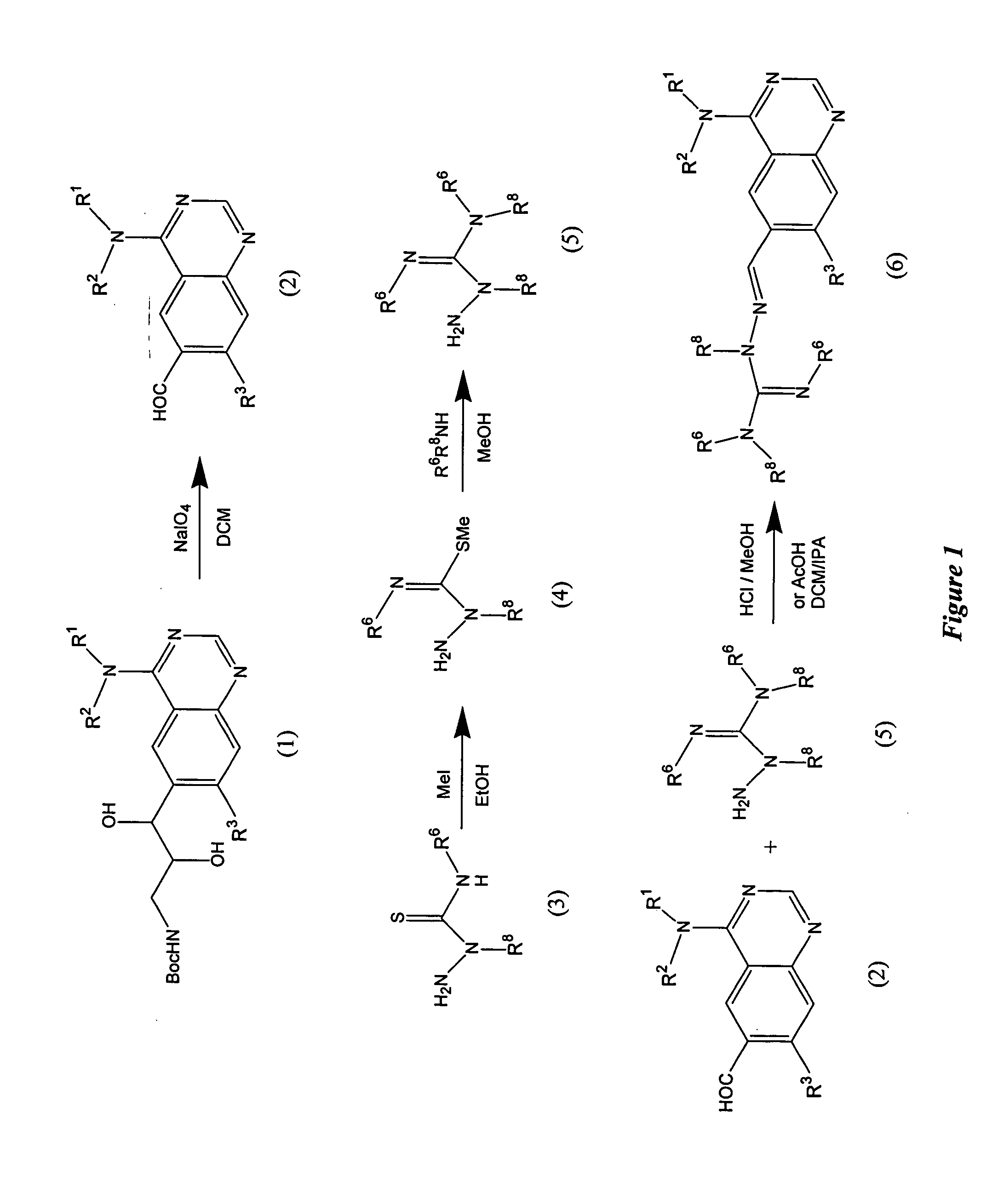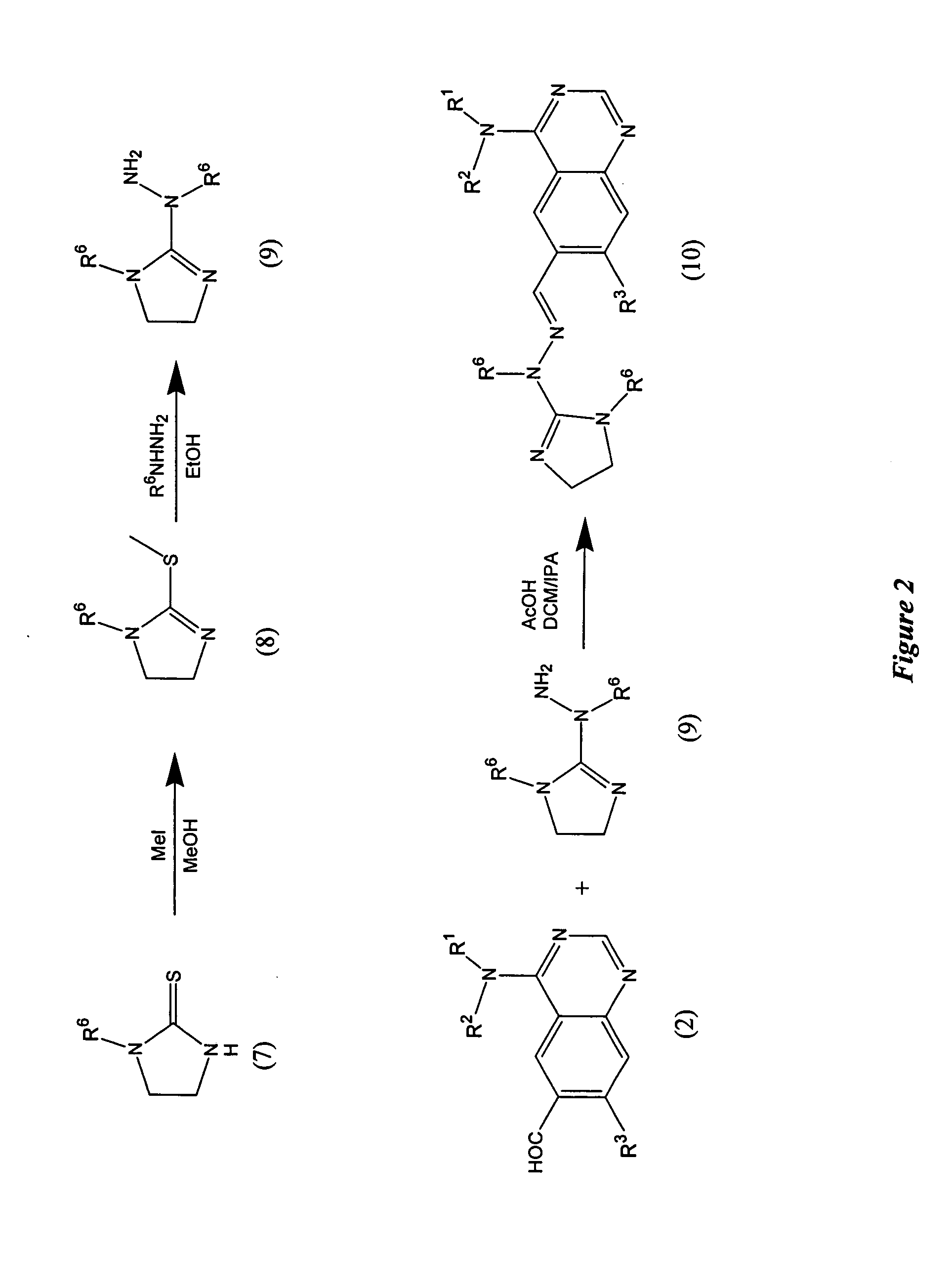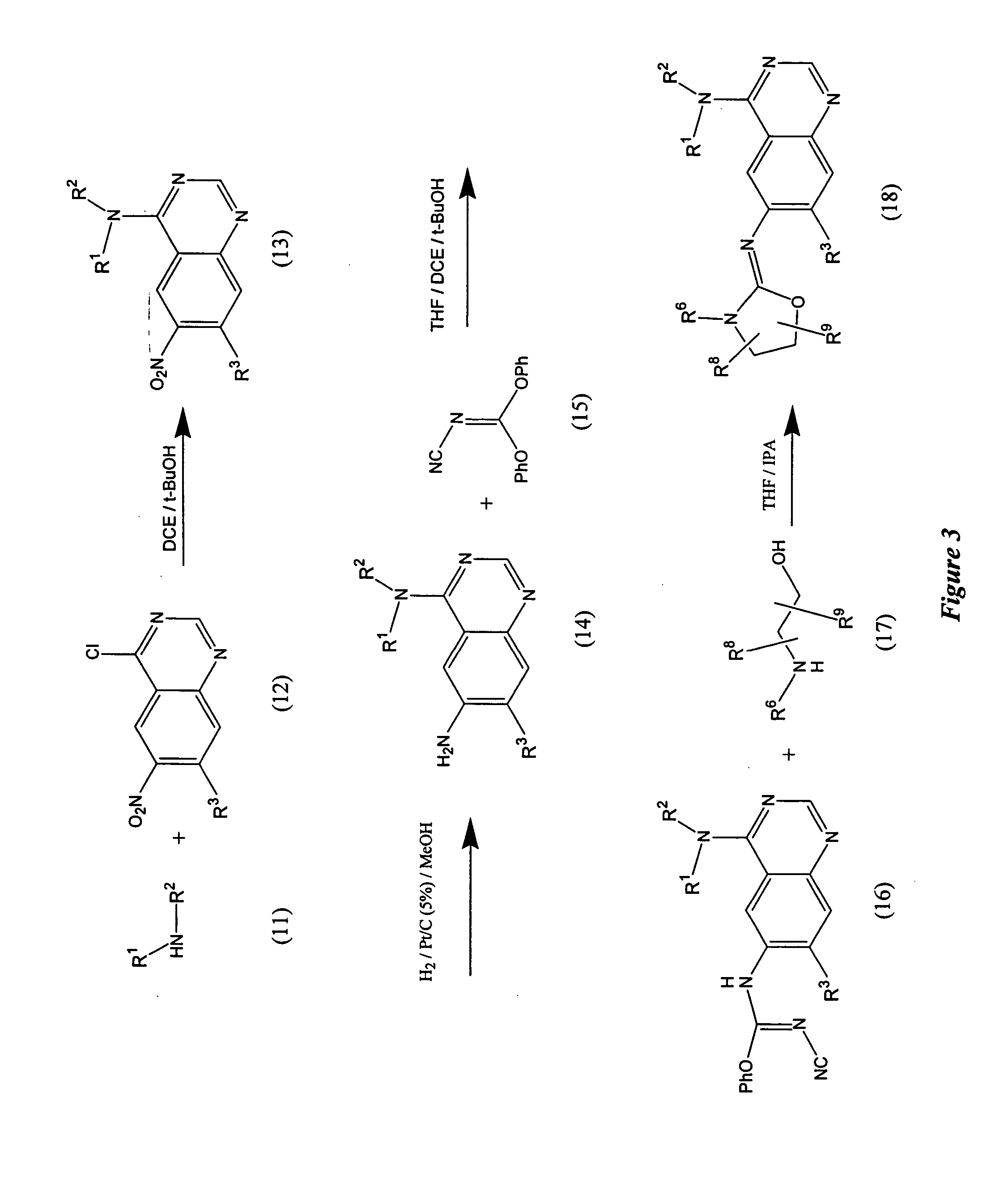Quinazoline analogs as receptor tyrosine kinase inhibitors
a technology of receptor tyrosine kinase and quinazoline analog, which is applied in the direction of biocide, animal repellents, drug compositions, etc., can solve the problems of poor prognosis of human cancer, early relapse, and correlation of erbb2 overexpression
- Summary
- Abstract
- Description
- Claims
- Application Information
AI Technical Summary
Benefits of technology
Problems solved by technology
Method used
Image
Examples
example 1
[0108]
Preparation of (E)-4-(3-methyl-4-phenoxy-phenylamino)-quinazoline-6-carbaldehydeguanylhydrazone
[0109] Step A: {2,3-Dihydroxy-3-[4-(3-methyl-4-phenoxy-phenylamino)-quinazolin-6-yl]-propyl}-carbamic acid tert-butyl ester is prepared by adding OsO4 (0.8 mL of a 2.5% solution in tBuOH) to a stirred suspension of {3-[4-(3-methyl-4-phenoxy-phenylamino)-quinazolin-6-yl]-allyl}-carbamic acid tert-butyl ester (310 mg, 0.643 mmol) and NMO (97 mg, 0.83 mmol) in 5 ml 4:1 acetone:water. After stirring for 3 h, the reaction mixture is quenched by the addition of 5 ml 10% NaS2O3 solution and diluted with 10 ml DCM. The layers are separated and the aqueous layer is extracted with DCM. The combined organic layers are dried (Na2SO4) and concentrated to give the crude desired product. The product is used without further purification in Step B.
[0110] Step B: 4-(3-Methyl-4-phenoxy-phenylamino)-quinazoline-6-carbaldehyde is prepared by adding NaIO4 (1.5 mL, 0.65 M in H2O) to a slurry of silica g...
example 2
[0114] The following hydrazinecarboximidamides are prepared as described in Example 1, Step D using either hydrazinecarboxoimidothioic, methyl ester or methylhydrazinecarboximido-thioic acid, methyl ester and the appropriate amine.
[0115] The following compounds (Examples 3-15) are prepared as described in Example 1, Step E using 4-(3-methyl-4-phenoxy-phenylamino)-quinazoline-6-carbaldehyde or 4-[3-chloro-4-(3-fluoro-benzyloxy)-phenylamino]-quinazoline-6-carbaldehyde and the appropriate hydrazinecarboximidamide.
example 3
[0116]
Preparation of (E)-N-Methyl-2-((4-(3-methyl-4-phenoxy-phenylamino))-6-quinazolinylmethalene)-hydrazinecarboximidamide
[0117] MS (ESI+) m / z 426 (M+1) detected.
PUM
| Property | Measurement | Unit |
|---|---|---|
| diameter | aaaaa | aaaaa |
| weight | aaaaa | aaaaa |
| pH | aaaaa | aaaaa |
Abstract
Description
Claims
Application Information
 Login to View More
Login to View More - R&D
- Intellectual Property
- Life Sciences
- Materials
- Tech Scout
- Unparalleled Data Quality
- Higher Quality Content
- 60% Fewer Hallucinations
Browse by: Latest US Patents, China's latest patents, Technical Efficacy Thesaurus, Application Domain, Technology Topic, Popular Technical Reports.
© 2025 PatSnap. All rights reserved.Legal|Privacy policy|Modern Slavery Act Transparency Statement|Sitemap|About US| Contact US: help@patsnap.com



